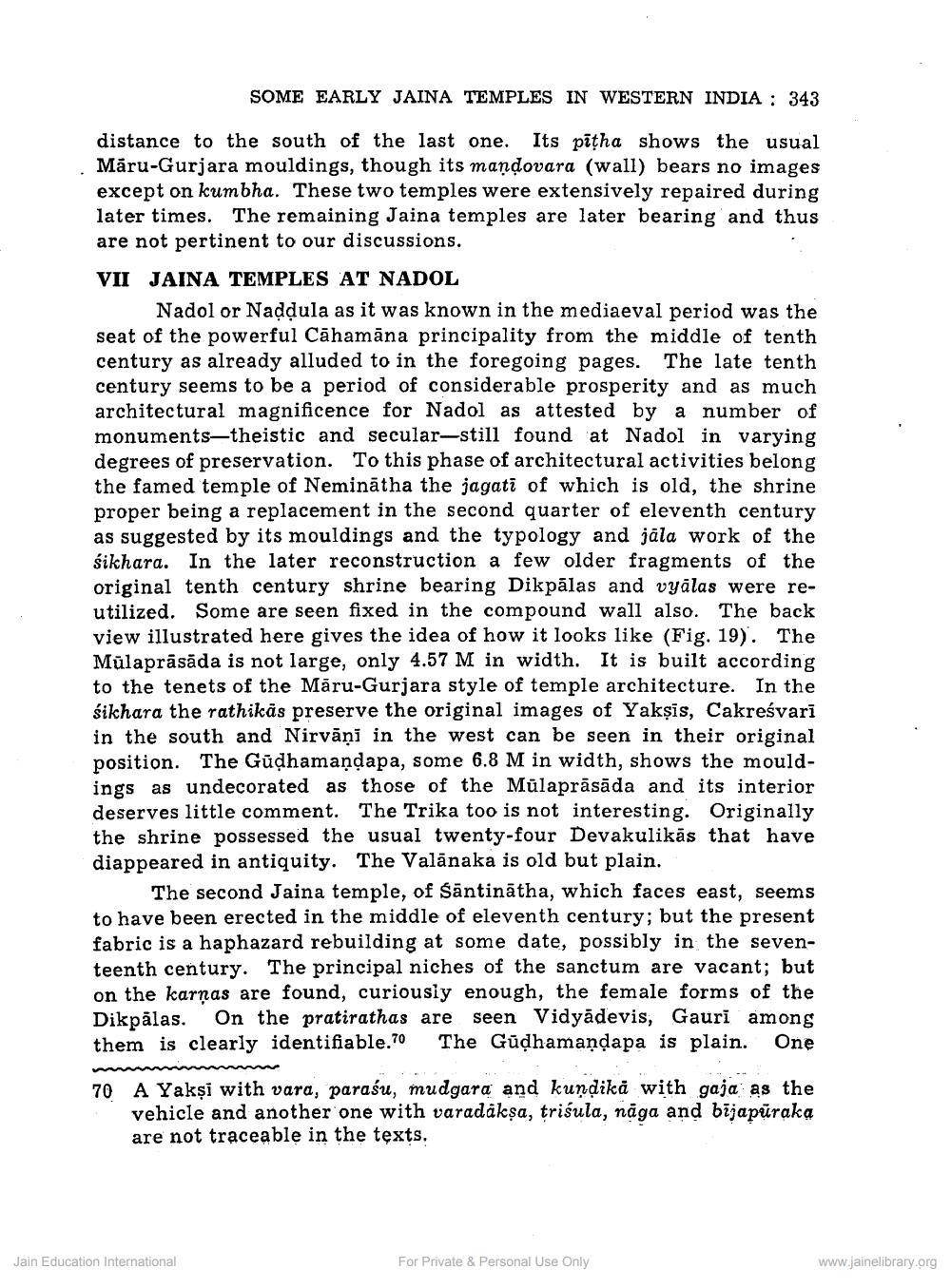________________ SOME EARLY JAINA TEMPLES IN WESTERN INDIA : 343 distance to the south of the last one. Its pitha shows the usual Maru-Gurjara mouldings, though its mandovara (wall) bears no images except on kumbha. These two temples were extensively repaired during later times. The remaining Jaina temples are later bearing and thus are not pertinent to our discussions. VII JAINA TEMPLES AT NADOL Nadol or Naddula as it was known in the mediaeval period was the seat of the powerful Cahamana principality from the middle of tenth century as already alluded to in the foregoing pages. The late tenth century seems to be a period of considerable prosperity and as much architectural magnificence for Nadol as attested by a number of monuments--theistic and secular-still found at Nadol in varying degrees of preservation. To this phase of architectural activities belong the famed temple of Neminatha the jagati of which is old, the shrine proper being a replacement in the second quarter of eleventh century as suggested by its mouldings and the typology and jala work of the sikhara. In the later reconstruction a few older fragments of the original tenth century shrine bearing Dikpalas and vyalas were reutilized. Some are seen fixed in the compound wall also. The back view illustrated here gives the idea of how it looks like (Fig. 19). The Mulaprasada is not large, only 4.57 M in width. It is built according to the tenets of the Maru-Gurjara style of temple architecture. In the sikhara the rathikas preserve the original images of Yaksis, Cakresvari in the south and Nirvani in the west can be seen in their original position. The Gudhamandapa, some 6.8 M in width, shows the mouldings as undecorated as those of the Mulaprasada and its interior deserves little comment. The Trika too is not interesting. Originally the shrine possessed the usual twenty-four Devakulikas that have diappeared in antiquity. The Valanaka is old but plain. The second Jaina temple, of Santinatha, which faces east, seems to have been erected in the middle of eleventh century; but the present fabric is a haphazard rebuilding at some date, possibly in the seventeenth century. The principal niches of the sanctum are vacant; but on the karnas are found, curiously enough, the female forms of the Dikpalas. On the pratirathas are seen Vidyadevis, Gauri among them is clearly identifiable.70 The Gudhamandapa is plain. One 70 A Yaksi with vara, parasu, mudgara and kunnika with gaja as the vehicle and another one with varadaksa, trieula, naga and bijapuraka are not traceable in the texts. Jain Education International For Private & Personal Use Only www.jainelibrary.org




